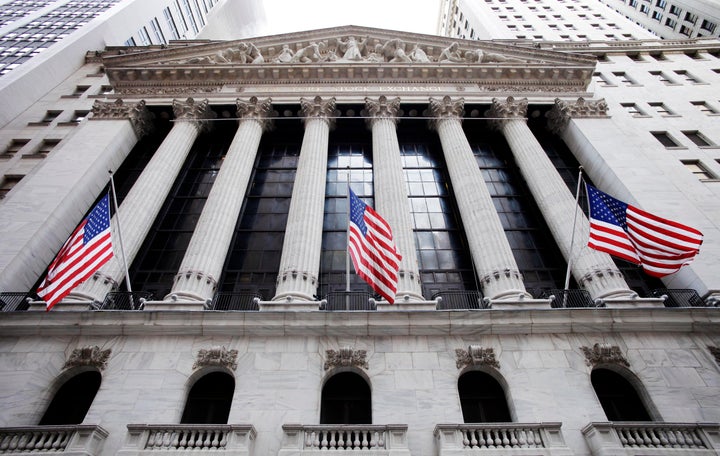
Another day, another article attesting to the glorious success that was the Troubled Asset Relief Program.
Today's story comes from Jim Puzzanghera of the Los Angeles Times, in a piece titled "Bailouts are shaping up to be cheaper than expected," assuring us in its subhead that "The U.S. expects to recoup most of its bailout money." Puzzanghera writes: "Almost three years after a series of government bailouts began, what many feared would be a deep black hole for taxpayer money isn't looking nearly so dark."
Yes, you see, what makes it not "so dark" is that taxpayers are going to recoup most of that particular investment in keeping zombies alive. This has become a sad exercise in repetition: TARP cast as an unexpected success. It very neatly glosses over the fact that TARP was just a portion of the overall financial-system bailout and that, broadly speaking, the 2008 financial crisis demanded broad reform of the system.
Taken as a whole, however, our post-crisis response has largely been a failure (or, as one source recently described to Matt Taibbi, "Everything's fucked up, and nobody goes to jail.") The TARP-as-success mythmaking requires us to believe that the post-crash environment didn't call for broad reforms at all. Rather, it simply called for a legislative exercise where taxpayers gave banks a bunch of money, and got some of it back a while later.
Of course, that only works if you look at the small piece of the bailout pie TARP represents. I enjoy the way this L.A. Times piece suggests the existence of other pie pieces, while finding a new way to gloss over it:
There is now broad agreement that the bailouts worked, stabilizing the financial system and preventing an even deeper crisis.
Still, many people are worried about the long-term effects of the government actions. They said that in demonstrating a belief that some companies were too big to fail, the government set a dangerous precedent, opening the door to future crises.
Those critics also said that hundreds of billions of dollars in bailout money from TARP, the Treasury and the Federal Reserve will not come back, mainly because of the rising tab for seized housing finance giants Fannie Mae and Freddie Mac, which combined have consumed $150 billion in taxpayer money so far.
So, here's a new take on the overall taxpayer bailout picture: Yes, the bailouts were not limited to TARP, but the failure to recoup the investment in toto is entirely the fault of fiendish Fannie and Freddie, who remain the sole post-collapse scofflaws ruining everything for everybody.
Indeed, Fannie and Freddie are no small part of the equation, but they are, nevertheless, just a part. Beyond TARP, a lot of money was lent to major banks in order to shore up the nation's financial system as a whole.
Here's a good interactive piece from the New York Times that runs it down completely. At a glance, you can see precisely what monies have gone to Fannie and Freddie, and what have gone elsewhere. More importantly, you can view for yourself the portion of the whole that's represented by TARP -- the "successful" part of the bailout.
The last time this matter came up, Moe Tkacik went after it with long knives, and along the way, she pulled the relevant Paragraph Of Simple Truths from TARP inspector general Neil Barofsky's quarterly report:
Notwithstanding this scaling back of TARP, an examination of the broader context demonstrates that the overall Governmental efforts to stabilize the economy have not diminished. Indeed, the current outstanding balance of overall Federal support for the nation's financial system, in actual expenditures and guarantees, including ongoing initiatives run by the Federal Reserve System, the Federal Deposit Insurance Corporation, the Department of the Treasury, the U.S. Department of Housing and Urban Development, and other Federal agencies, has actually increased more than 23% over the past year, from approximately $3.0 trillion to $3.7 trillion, the equivalent of a fully deployed TARP program, largely without additional Congressional action, even as the banking crisis has, by most measures, abated from its most acute phases.
And the last time I had occasion to comment on the Official History of the Troubled Asset Relief Program, I pointed out one example of a program that has taxpayers on the hook while banks reap profits:
As of June 30th of this year, Citibank had issued $64.6 billion in taxpayer guaranteed debt. Through the end of 2009, those numbers for JP Morgan and Bank of America were $41 billion and $44.3 billion, respectively. These notes are guaranteed under the FDIC's Temporary Liquidity Guarantee Program (open to every bank in the country, these three banks received approximately half of the program's proceeds) and are backed by the full faith and credit of the United States (i.e. you and me). So since Uncle Sam is guaranteeing that debt, the banks were able to sell it to investors at a lower rate. For example, rather than paying investors 8 percent to entice them to buy their notes and bonds, Citigroup would only have to pay 4 percent. The banks are saving money every year thanks to the taxpayer guarantee, and this program is still very much alive.
As I am wont to repeatedly point out, one thing Wall Street beneficiaries of TARP monies spent those ducats on was an army of lobbyists, who worked hard on behalf of their paymasters to ensure any reforms that came down the pike were studded with sufficient loopholes to allow the party that collapsed the economy to continue long after the hangover. But you don't have to take my word for it! Here is some reporting from -- guess who? -- the Los Angeles Times:
Even as the financial industry has sought to keep a low public profile, some of the country's largest banks have ramped up their spending on lobbying to fight off some of the stiffest regulatory proposals pending in Congress.
Lobbying expenditures jumped 12% from 2008 to $29.8 million last year among the eight banks and private equity firms that spent the most to influence legislation, according to data compiled from disclosure forms filed with Congress.
The biggest spender was JPMorgan Chase & Co., whose lobbying budget rose 12% to $6.2 million, enough for the firm to have more than 30 lobbyists working for it. Among other banks, spending on lobbying rose 27% at Wells Fargo & Co. and 16% at Morgan Stanley.
Going forward, here's three simple things every American taxpayer needs to know in order to penetrate the "TARP was a huge success" meme, which slouches onward.
1. Saying taxpayers recouped most of the monies allocated in TARP occludes the fact that taxpayers have failed to recoup the bulk of their entire investment in "saving the financial system," which, per Barofsky, involves "ongoing initiatives run by the Federal Reserve System, the Federal Deposit Insurance Corporation, the Department of the Treasury, the U.S. Department of Housing and Urban Development, and other Federal agencies," and which, at the time of his report, had "actually increased more than 23 percent over the past year, from approximately $3.0 trillion to $3.7 trillion, the equivalent of a fully deployed TARP program."
2. Taxpayers remain on the hook as the victim of first resort for further financial crises, even as those same financial institutions profit from those arrangements.
3. A goodly portion of the investment you made to prevent a future financial crisis went to funding a massive lobbying effort to ensure that the reforms necessary to prevent a future financial crisis would not be enacted.
And tell your friends, because part of the success of the "TARP was awesome" mythmaking stems from the fact that reporters will just blithely repeat it, like mynah birds with pecan-sized brains.
[Would you like to follow me on Twitter? Because why not? Also, please send tips to tv@huffingtonpost.com -- learn more about our media monitoring project here.]
